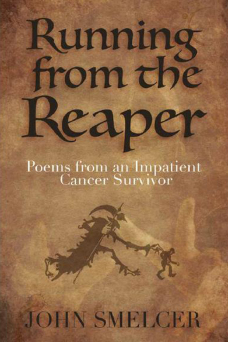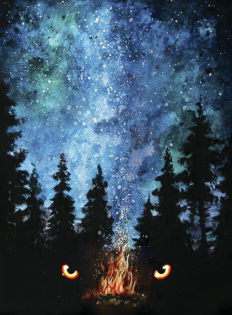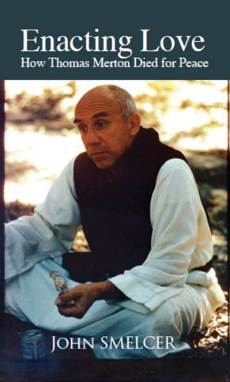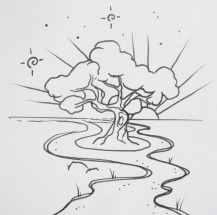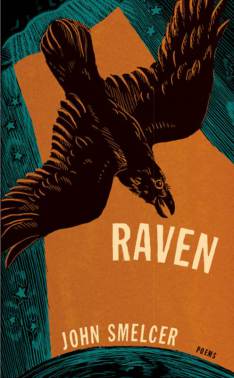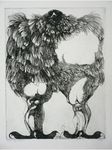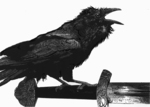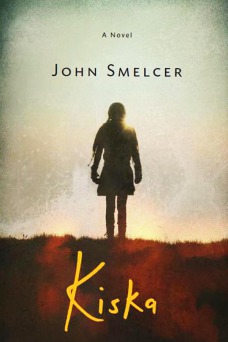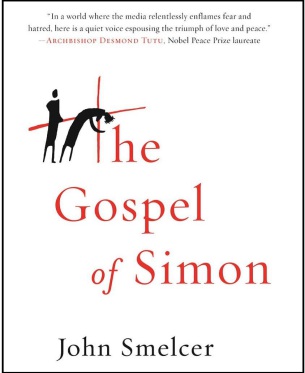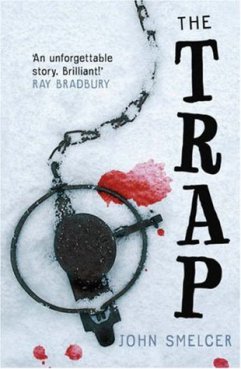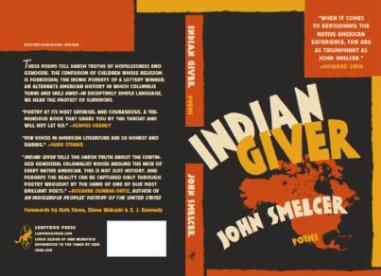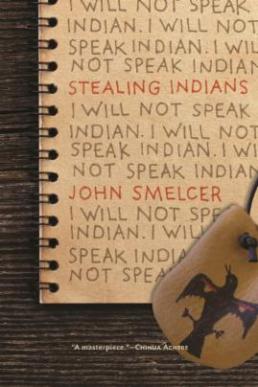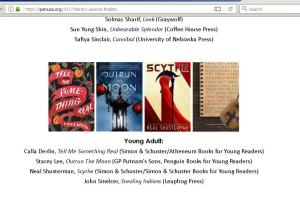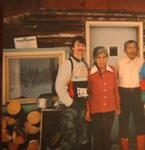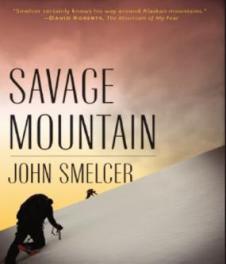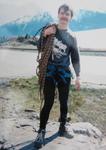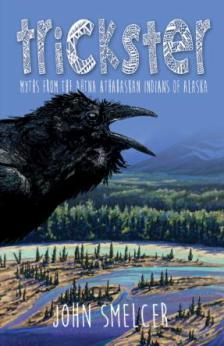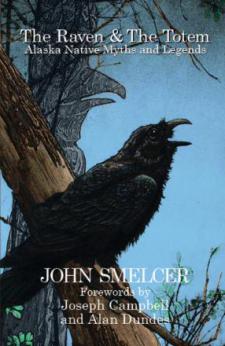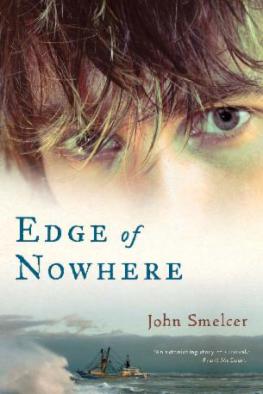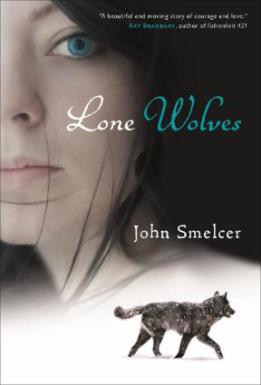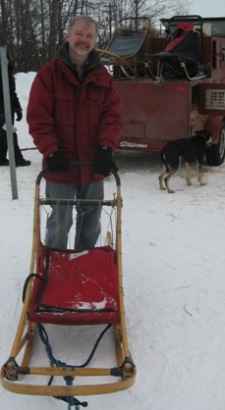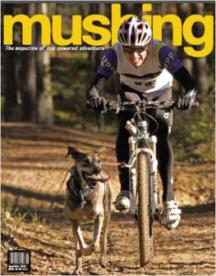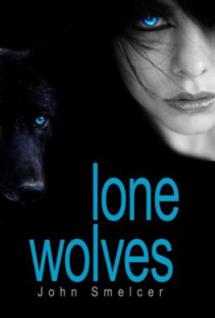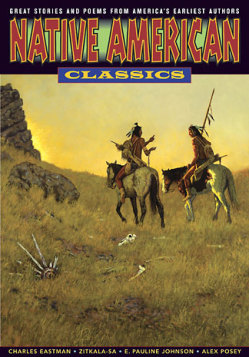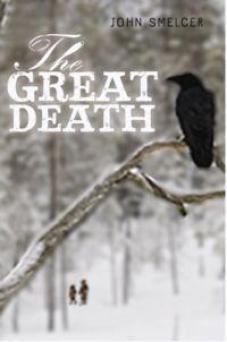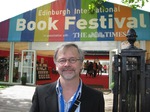"What impresses me most about John Smelcer, aside from his powerful writing, is his indomitable spirit. He has never given up; he has never let others quiet his voice. He continues to write and the world continues to listen to what he has to say." -James Welch, American Book Award winning author of Fools Crow & The Indian Lawyer
"John Smelcer is one of the truly great poets I have come across in my life. His poetry is of genius." -Ruth Stone, winner of the National Book Award
"John Smelcer is Alaska's modern day Jack London." -Mushing Magazine
"Smelcer's prose is lyrical, straightforward, and brilliant...authentic Native Alaskan storytelling at its best." -School Library Journal
[Edge of Nowhere] " is a spare tale of courage, love, and terrible obstacles." -Wall Street Journal
"It impresses me that John Smelcer is a very considerable American poet, an astute observer of our contemporary scene." -X. J. Kennedy, author LITERATURE
"Allen Ginsberg named John Smelcer one of the most brilliant younger poets in America. Poetry as it should be, without a wasted word, with unparalled attention to sound and rhythm." -W. P. Kinsella, author of Field of Dreams
John Smelcer has given lectures, book readings, and book signings all over the world, as far away as Russia, Australia, and even at the Edinburgh International Book Festival during Fringe Week in 2010 (see photo below).
Click on any book cover to go directly to amazon.com
NOW AVAILABLE WORLDWIDE!
Running from the Reaper: Poems from an Impatient Cancer Survivor
A collection of poems about the experiences, feelings, emotions, concerns, tribulations and sufferings of undergoing cancer treatment. Sad, poignant, hilarious, genuine, satirical, and uplifting. John Smelcer's gift to anyone diagnosed with cancer, fighting it, survived it, and for anyone who cares for those with cancer. Poems in this book have appeared in many of America's premiere magazines about cancer such as Cure Today, Coping, and Conquer. Running from the Reaper is a cancer survivor's autobiography of his experiences written in poetry.
“It’s hard to imagine what John Smelcer has been through. His remarkable life has been characterized by great trauma, and great joy. Fortunately, he also has a talent for survival, and given his life story, astounding reserves of love and optimism.” -Rod Clark, Editor, Rosebud Magazine
"With immense honesty, humility, and humor, John Smelcer invites us to sit beside him in the front car of a rollercoaster no one wants to ride. I read this beautiful book from cover-to-cover, unable to put it down. I cried, laughed, and was incredibly inspired by his poetic journey from diagnosis to treatment to recovery." -Amazon.com (5-star review)
A portion of the profit from royalties will be donated to the American Cancer Society.
Click on the YouTube icon below to watch a video of the author talking about the book.
COMING SOON!
The Beast in the Dark
A YA novella based on a traditional Alaska Native myth that the author heard told by elders many times around campfires while he was growing up in Alaska. In the myth, a marauding and unknown creature stalks and kills people from a small village. A teenage boy named Keeth, who is always helping the elderly and the infirm, pleads with the universe to make him strong enough to hunt down and slay the beast. The next day, a mysterious shaman comes to answer his prayer. A kind of Native American superhero origin story, with literary nods to The Sword in the Stone meets Rambo and The Karate Kid. "A classic and riveting scary campfire story."
“John Smelcer is a master and compassionate storyteller. His novel, The Beast in the Dark is a superb recounting of how a young Alaskan boy encounters a ruthless beast that is terrifying his tribe. With great courage, he overcomes it and then becomes chief of his tribe. Told by a great grandfather with tender humor to children at a campfire, the story weaves the children into a narrative that they will never forget. Nor will we.”
—Jack Zipes, Oxford Companion to Fairy Tales, Why Fairy Tales Stick
“A seemingly gentle fireside tale leads eight children to realize that their great-grandfather’s story is more than just a fable. In his riveting story, a man-eating beast wreaks havoc on their tiny Alaskan village. The old man’s story highlights the highs and lows of human behavior, punishing hubris and rewarding humble kindness, quiet bravery, and determination in the face of impossible odds, with the one reward worth having. Not for the faint-hearted!”
—Frieda Hughes, British poet, artist, and daughter of Sylvia Plath & Ted Hughes
NOW AVAILABLE WORLDWIDE!
Click on the bookcover above to order on amazon
Thomas Merton’s protests against war, racism, and social injustice in the 1960s are as relevant today as ever
If you care about love, compassion, mercy, peace, non-violence, Civil Rights, tolerance, or inequality, read this book.
Thomas Merton was arguably the most famous monk in the world when he left the safety of the Abbey of Our Lady of Gethsemani monastery in Kentucky in the fall of 1968 to go on what would be known as his Asian Journey. Along the way, he visited northern California, Alaska, and India, before his last stop in Thailand, where he attended a week-long monastic conference at a Red Cross Center outside of Bangkok. Merton could not have known at the time that he would never leave Southeast Asia alive.
Or did he?
One of the most influential figures of the Twentieth Century, Thomas Merton has been called “An American Prophet” and “The Conscience of America.” Throughout the tumultuous 1960s, Merton was a vocal advocate for the civil rights and peace movements. Merton was so influential that when the late John Lewis crossed the Edmund Pettus Bridge he carried only one book in his backpack: Thomas Merton's autobiography. He was the first major religious figure in America to come out against the Vietnam War, which he saw as unjust and immoral. He convinced Martin Luther King, Jr. to add his voice to the anti-war cause. Thomas Merton died under mysterious circumstances in Bangkok on December 10, 1968. In September of 2015, Pope Francis named Merton as one of the greatest Americans alongside Abraham Lincoln, Martin Luther King, Jr., and Dorothy Day, who was also one of Merton's friends.
“For more than fifty years, I and many have lived with the suspicion that Thomas Merton, like his friend Martin Luther King, Jr., died a martyr. This amazing book . . . reveals a startling twist in the story, confirming what I have long believed.” –Fr. Matthew Fox, author of Original Blessing
“Thomas Merton’s premonitions about his assassination are not proof that they were fulfilled, but I find them deeply moving—and so will readers.” Br. David Steindl-Rast, Benedictine monk & author
“A. J. Heschel, my mentor at the Jewish Theological Seminary, loved Merton’s work and introduced me to his writings. Here was an ally to Jews who were at the time hoping that the Catholic Church would go beyond eliminating the Church’s teaching of hatred toward Jews and require every parish to teach its children about the way Christianity had been a major force in developing hatred of Jews. It was only later, as a social change activist that I found Merton to be a great inspiration for all of us who sought to heal and transform the world. Enacting Love reminds us of how very much we lost in Merton’s probable assassination, just as we lost Martin Luther King, Jr. and Bobby Kennedy that same year. His writings continue to make him a welcome ally to all of us involved in trying to build a society of love and justice.” –Rabbi Michael Lerner, Editor of Tikkun
"If you ask me, what Smelcer suggests in this book is not at all out of the realm of possibility." -Marc Becker, author of The CIA in Equador and The FBI in Latin America
"An absolute 'must read' for the legions of Thomas Merton fans and admirers, "Enacting Love: How Thomas Merton Died for Peace" is an extraordinary expose that, simply stated, is a riveting read from beginning to end. "Enacting Love" is especially and unreservedly recommended for community, seminary, college, and university library Christian Social Issues and Catholic Biography collections." Midwest Book Review
“Speaking truth to power can be dangerous. Enacting Love: How Thomas Merton Died for Peace reminds us of this and is as relevant today as it was 50 years ago . . . Smelcer’s book tells a powerful story rooted in the lives of people of faith wanting to make a difference and often willing to go beyond words to step into places many of us fear to go . . . This is critical reading for those concerned with compassion, justice, faith, and peace.” -Universalist Herald
"If you're at all interested in Thomas Merton, Enacting Love is a must-read. It's a moving read that will engage you and make you think about the issues that concerned Merton and that continue to concern us." -Catholic Missourian, June 10, 2022, Vol 65, No. 25
"I have no doubt writing this book for John Smelcer was a labor of love. Smelcer's admiration for Thomas Merton is unquestionable. His appreciation of and affection for Helen Marie Grimes is apparent throughout the book. His excitement at the discovery of Merton's belongings and his role in ochestrating their safe arrival at the Merton Center is infectious." The Merton Seasonal, Vol. 48, No. 2, Summer 2023
John Smelcer's inspirational pocketbook on compassion, meditation, contemplation, mercy, and living the spiritual life. Plato famously said that "the greatest privilege in life is to awaken the Soul of another." This is the author's priceless gift to the world, a kind of Handbook for the Living.
The hustle-bustle of modern life, what Thomas Merton called the "absorbing rush," drains our happiness and our spirit. We are assailed by mixed messages and advertisements that tell us who and what we should be, and promises that we will finally be happy if only we bought certain products or looked a certain way. Mass media enflames fear and hate, negativism and suspicion for political agendas. And despite all our connections via cell phones, email, and social media, we are lonelier than ever. Depression is pandemic. Poor health is epidemic. Drug abuse is epidemic. Suicide rates are at an all-time high. We need to learn how to revive and nourish ourselves and our spirits in silence, stillness, and contemplation. It took the author more than half a century to learn these lessons. Let’s hope it doesn’t take you so long.
Illustrated by Michael T. Duncan
"Heartfelt and wise sayings artfully gathered from the University of Life—the best school there is! Enjoy. Imbibe. Grow a bigger soul on meditating and then practicing the wisdom shared here." —Matthew Fox, author of Original Blessing
Excerpts from A New Day:
I vividly remember the night I lay in my bed at seven years old looking at stars outside the window with a dawning realization that the span of my life would be nothing more than an eye-blink to the universe. So young, I already understood that we only have this moment, the closest we ever come to glimpsing eternity.
My Alaska Native mentor, Walter Charley, always taught me to have compassion for animals, what he called our fellow passengers on this planet. Twice in my half century of living in Alaska, I have risked my life to rescue moose calves drowning in raging rivers after their heavier and stronger mothers safely forged across to the other side. The last time was on the upper Klutina River. As I was walking back to my second cousin’s truck, sopping wet, cold, and beaming ear-to-ear with joy, the little moose calf I rescued ambled up behind me and pressed its head against my heart, thanking me for saving its life.
For years, I walked down to a creek every day and sat on a log and did nothing. For that is what it must have seemed to a casual observer. Although it may have appeared outwardly as if nothing was happening, everything was happening inside me.
All my life I have been terrified of silence and of being alone. Just ask anyone who knows me. How delightful it was when I learned after more than half a century how unlonely both can be.
It has always amazed me how the qualities we say we most admire are kindness, generosity, selflessness, honesty, patience, and understanding; and the qualities we most abhor are greed and covetousness, meanness, bullying, egotism and selfishness. And while we may admire the qualities of the first, we adore—even idolize—the fruits of the second.
Joy has many enemies. Perhaps the most incipient is our modern predilection for busyness, for always going a hundred miles an hour in a hundred different directions, as if being busy is a virtue. It is one of our most persisting illusions. Learn to slow down, enjoy the present moment. Live fully in every minute for it never comes again.
NEW in JULY 2019
In 1997, John Smelcer and Ted Hughes—Sylvia Plath’s widower and Poet Laureate of the United Kingdom—met at a pub in Guildford, England. Over pints, the idea of this poetry collection was born. Finally, the book that Hughes considered to be the American cousin to his Crow flaps, caws, and spraddles into the pages of literary history. It was inevitable that Hughes and Smelcer should meet. Crow, meet Raven.
In the mythologies of cultures worldwide, Raven, or his smaller cousin, Crow, is often portrayed as a mischievous trickster Creator and Destroyer. In this collection of poetry, John Smelcer has crafted Raven as all these things, but also as an Instigator who was present at key moments of human history when things went awry. When bad things happen, Raven did it. A quarter century in the making, Raven is finally flapping his way into literary history!
In an uncanny coincidence, days after one of the artists who illustrated Raven received his copy of the book, he took it to his university office. A few days later the university building in which he works was partially swallowed by a giant sink hole. No kidding. Raven did it!
Illustrated by Larry Vienneau, Leonard Baskin & Don DeMauro
“From the Far North comes Crow’s bigger cousin jabbering news of this poet.” Ted Hughes, Poet Laureate of the United Kingdom
“In clean clear language Smelcer takes this knotty cosmic riddle, cruel compassion, treacherous beauty, trickster Raven God—or human beings—and tries out his tough, funny poems. This book is a hard-won look at the riddle.” Gary Snyder, winner of the Pulitzer Prize
“Ted Hughes and I co-founded Modern Poetry in Translation in 1965, five years before Faber & Faber published Crow. I can tell you that Ted considered this book to be the sister companion to his.” Daniel Weissbort
“John Smelcer is a myth-maker. He has his own tongue, ancestry, ancient tribal ground. And coming out of those particularities, his myths ring true and touch us wherever we dwell in the here and now. Interesting and effective in its own right, this book is deepened and enriched by its close association, in friendship and vision, with a kindred poet, Ted Hughes. Raven and Crow eye one another, warily.” David and Helen Constantine, Editors of Modern Poetry in Translation
“In a world where such poets are more rare than people might imagine, John Smelcer is one of the truly great poets I have come across in my life. His poetry is genius.” Ruth Stone, winner of the National Book Award
“In these fresh and mythic poems, John Smelcer reinvigorates the midnight attitude of Raven, taking the legendary trickster into the Bible, where Raven easily competes with the devil, and then into the contemporary world, where human beings writhe in response. The authenticity of Smelcer’s voice, in collaboration with and in tribute to Ted Hughes makes an electric, multi-leveled series of parables for our often dark times. Raven, a project accomplished with a sublime spirit of collaboration, glows.” Molly Peacock, Past-President, Poetry Society of America
"Raven is delightful, both the book of poems by John Smelcer and the character capable of playing any role in this poetic movie of all our lives that Smelcer has written. Here, Raven (the character, the mythological figure) is a redneck. Raven is a civil rights star. Raven is a man, sometimes, and other times, a woman who’s always “gender-befuddled.” Raven is the Other and also one of us. Raven is whatever we want him to be: ancient history, modern global context, music, silence, and maybe even a great movie streaming on Netflix... Raven “sidles up” and “jabbers.” There is humor and irony and slapstick and satire in this work of, for the most part, short poems that professes to owe a debt to the bird in poet Ted Hughes’ Crow: From the Life and Songs of the Crow, first published in the early 1970s, and one of Hughes' most important works. But where Crow could be darkly crass and sometimes a bit too randy, Smelcer’s Raven is funny and sad, as if it could still remember younger times when it (like us) was more idealistic. You’ve stumbled on the beauty that is John Smelcer’s Raven." -New York Journal of Books
“The poetry in Raven is not just an elder’s tale retold; not just another Aesop’s, but contemporary and imaginative retelling as a modern fable. And daring, in that a dangerous character is brought to life on pages where love and loss, good and evil co-exist. Smelcer not only colors outside the lines, but he also adds dimensions to the background that will allow readers to delve more deeply into the psychologies of good and evil.” -Ragazine
"A tremendous book...a wonderful display of imagination in memorable poem after poem." -X. J. Kennedy, ed. LITERATURE and An Introduction to Poetry.
From the Foreword: "As a member of an Alaska Native tribe, I have known Raven (Corvus corax) all my life as the deified trickster, the ever-selfish, ever-hungry, ever-wicked, ever-present, and always clever god of our Native cultures. Raven is so prominent in our lives that we even have a Raven Clan (Saghani Utsuuy). Over decades, I have written several books of Alaska Native mythology. Over a lifetime spent in Alaska's wilderness, I have witnessed firsthand the cunning and mystery of ravens. Moreover, as the only member of my tribe who can read and write fluently in my severely endangered Native language (Ahtna), I have included a handful of my poems about Raven written in Ahtna Athabaskan (the language that Raven gave us) and have rendered them into English."
"Your poem 'Returning the Gift' is as good as Hemingway's 'Big Two-Hearted River.' Honest. Seamus Heaney would have been pleased." -Daniel Langton, Beat poet
Photo of Beats at opening of City Lights Bookstore (formerly Pocket Book Shop) in San Francisco in 1965. Dan Langton (in glasses) standing to right of Allen Ginsberg (center) and directly below Lawrence Ferlinghetti dressed in a monk's robe.
NEW in November 2017
Everyone knows how during WWII the US Government interned Japanese-Americans as suspected enemies of the state. But few people know that at the same time 881 Alaska Natives called Aleuts were also interned. John Smelcer's new historical novel is about the Aleut experience as told from the point of view of a courageous teenage girl named Kiska who stood up against injustice. When her people needed a champion, she rose to meet the challenge. Based on true events.
If you read only one book this year, let it be this one.
"Though it is a work of fiction, Kiska is based on very real events from a tragic and nearly forgotten time in American history. Its lessons are ones that all would do well to remember. Smelcer’s beautifully written story of Kiska, and of the misery she faced with hope and love, is nearly impossible to forget." -Foreword Reviews (5-star review) Featured Book
"The quiet tone of Smelcer's text softens the cruelty the Aleutians suffer, and in the character of Kiska, he gives readers a strong, resourceful heroine. A look at an obscure but important part of United States history." -Kirkus
"Based on historical events and written for young readers, Kiska, shines a much-needed light on a shameful and little-known episode in US history. Smelcer’s descriptions of Kiska’s island, traditions, and way of life are beautiful, the loss of which is made all the more painful when contrasted with his descriptions of the internment camp where Kiska and the other Aleut people are held. His style is quiet and literary, making the racism and cruelty the Aleutians endure more palatable for young readers. Kiska is a bold and believable heroine; a character who will stay with readers long after they have finished reading her story." -Historical Novel Society
"Perhaps there has never been a more important time to ask: how far do our rights extend during a time of conflict? A new book by
John Smelcer offers a unique perspective on a seldom-mentioned event in the history of pre-statehood Alaska. Kiska tells the story of the internment of native Alaskans during World War II. Set in
1942, the story is framed in the voice of Kiska, now a grandmother looking back at her own fourteenth year when japan invaded islands near her Aleutian island home and her family is removed to
shelter in an old salmon cannery 2000 miles away. As Smelcer describes life in the cannery, he never departs from the humanity of
Kiska's intensely personal story. Among the richly-drawn characters, the reader meets sister Donia, who is driven to desperation after losing her husband and child; brother Peter, who is out hunting
and initially left behind; and Agafon, a mystical character who teaches Kiska to listen, to hunt, and to survive. Through circumstances that reflect hard lives and the struggle for survival, Kiska
never stops looking for hope and relationship.
Kiska presents a rich blend American history, cultural heritage, and powerful storytelling intertwined in a unique and enlightening way. The book is accompanied by documentation, photographs, and the author's own account of the origins the story. Kiska is a readable novel that fits well within an American history and literature curriculum for young adults, but should also be embraced by the adult reader who will be challenged and informed by this story." -Midwest Book Reviews, September 2017
In 1980, President Reagan signed the Commission on Wartime Relocation and Internment of Civilians Act, which authorized the establishment of a commission to review the facts and circumstances surrounding the relocation and internment of tens of thousands of American civilians—mostly Japanese Americans and Aleutian Islanders—during World War II under Executive Order 9066, as well as to review directives of United States military forces requiring the relocation and internment of American civilians. Forty-two years after the Aleuts returned to their burned and ransacked villages, the United States government finally recognized that their constitutional rights had been violated. In 1988, Congress passed the Aleut Restitution Act (P.L. 100-383), a sister legislation to the Japanese-American Restitution Act, which paid a mere $12,000 to surviving victims of the internment camps. By then, unfortunately, about half of the survivors had long since passed away. U.S. senators Daniel Inouye (D, Hawaii) and Ted Stevens (R, Alaska)—the longest-serving republican senator in American history—co-sponsored the landmark legislation. Both senators had served in WWII and both had served as President pro tempore of the U.S. Senate (third in the Presidential Line of Succession). Senator Inouye was the first Japanese-American to serve as a U.S. senator. Alaska Congressman Don Young also co-sponsored the legislation. In 1987, Senator Stevens asked John Smelcer, a cultural anthropologist and oral historian, to interview surviving Aleut elders so that their heartrending stories could be included in the legislation. A story thirty years in the making. Coincidentally, John's wife's grandfather was a Naval Fire Control officer on Attu during the war in the Aleutian Islands.
NOW AVAILABLE WORLDWIDE:
A BOOK TO HELP HEAL THE WORLD
Published in print & eBook in English, in Spanish (El Evangelio de Simon) and soon to be available in Italian (Il Evangelio di Simon).
Two thousand years ago, during Passover, an itinerant Jewish preacher and miracle worker named Jesus was condemned to be crucified—an all too familiar and gruesome spectacle in Jerusalem in those days. That very morning, a man named Simon, an immigrant from Cyrene, had come into the city with his two sons to sell a cartload of wine to the crowd of pilgrims flooding into the city for Passover. By chance, Roman soldiers compelled Simon to help Jesus carry the heavy cross through the crowded streets to Golgotha, where he was crucified. What did Simon witness? What did he and Jesus talk about? Eager to learn more about his unfortunate companion, Simon returned to Jerusalem the next day. What he learned changed his life forever. Ever since, the descendants of Simon have safeguarded an incredible secret. A book for everyone, no matter what you believe...or don't.
Praised worldwide for its interfaith messages of love, compassion, tolerance, social justice and non-violence, The
Gospel of Simon is the international award-winning novel that is daring and imaginative, faithful, and yet a radical retelling of "The Greatest Story Ever Told"
"This book is storytelling at its best, and it can apply to all faiths and spiritual teachings. The book’s simple and eloquent prose invites the reader to read it deeply with an open
mind and heart...For me as a social justice activist and scholar, what moved me the most is Smelcer’s emphasis, with much simplicity, on how our spirituality or faith can be a force for justice in
the world. The Gospel of Simon is a spiritual gift, and I am grateful to John Smelcer for writing it. It is a book that I will keep in my spiritual activist
toolbox and refer to as a resource whenever I am confronted by moments of spiritual weaknesses in my daily work for justice." Tikkun Magazine
"You, like me, might find this book hard to put down and will be tempted to quickly read its 150 pages. But I'm guessing you'll want to return to it time and again to tease out more
truths. This type of book is overdue in Christian literature, and presents a life-changing narrative for those who have lost their faith, for those who are disgusted with the religious attitudes of
some, or those looking for an encounter with something or someone greater than themselves...I can imagine it having a significant impact on spiritual thinking."
Chris Thompson, Alaska Dispatch News
“As a Roman Catholic priest, there are parts of this book that challenged me and gave me pause to think. I can't say much without the risk of spoiling the book's many surprises. Having said that, there is much to admire in the way Smelcer has told a story that we all know, but rarely have considered so profoundly. In this retelling of Jesus's Passion from the point of view of Simon of Cyrene, who the Bible tells us helped Jesus to carry the heavy cross to Golgotha, Smelcer portrays an emotional Jesus who smiles, laughs, and is even playful at times. But he is also stern, pensive, and sad. At its heart, this is a book about love - God's love for us. In a bold and evocative re-imagining that is at once authentic yet also thoroughly modern, this heartfelt story speaks directly to us, reminding us of Jesus's message of love, compassion, mercy, inclusion, and peace. Perhaps this is the only way this story could have been told. Dedicated to Pope Francis and praised by many of the world's greatest religious thinkers and clerics, The Gospel of Simon is a timely and timeless book that readers will turn to again and again to reflect on favorite dog-eared passages. A remarkable and unforgettable book." Midwest Book Review
"From an obscure passage in the Bible when a Roman soldier plucks a curious observer from a straining crowd lining the road to Golgotha and directs him to share the burden of an
exhausted Christ by helping him carry his cross the final distance to his crucifixion, author John Smelcer generates a contrapuntal dialog as witness to the untold story of Simon. Simon, who became a
believer. Simon, whose sons and grandsons through generations would protect and defend the truths and proofs inherent in their story . . . Smelcer’s tale does not come across as sermonizing, but as
an internal dialog wherein he finds himself asking and answering — without being disingenuous — the same questions even the most devout will ask of themselves. In The Gospel of
Simon, Smelcer explores the deplorable. In showing us a man who answered the call, he also shows us there is a righteous, if not religious, path forward, if only we allow
ourselves to take it. Ragazine
Click here to read the full, expanded interview between the author and W. P. Kinsella (author of Field of Dreams)
Click here to read an interview in the Ithaca Times
Click on the icon below to watch the author talk about The Gospel of Simon on YouTube
John Smelcer's worldwide acclaimed debut novel. The one that started it all! Bound to become a classic!
For decades, I hunted moose and caribou with my half-blood Indian uncle, Herbert Smelcer, who was an important leader in our tribe and in Alaska Native politics. Herb was like a father to me. As president of Ahtna Native Corporation, he signed landmark legislation with President Jimmy Carter. During a winter caribou hunt at twenty below zero, Herb and I split up on our snowmobiles to cover more country. We agreed to meet at a certain place hours later. When Herb didn’t show up, I went looking for him. I found him standing beneath a tree at the top of a hill, his snowmobile about thirty feet away. His foot was caught in a wolf trap bolted to the tree by a short chain. It had been concealed beneath the snow. He couldn’t get out by himself. It took my help to open the steel jaws. And although my uncle was unharmed, the idea for The Trap was born. Herb died before the book was published, but he read the manuscript and loved the story.
Winner of the 2004 James Jones First Novel Prize for the best debut novel in America. Jones was the author of such acclaimed works as From Here to Eternity, Some Came Running, and The Thin Red Line.
American Library Association BBYA Top Ten Pick
VOYA Top Shelf Selection
England National Book Trust
Scottish National Book Trust
Irish National Book Trust
Selected Reviews
“An unforgettable story. Brilliant!” ―Ray Bradbury
“In The Trap, John Smelcer takes his readers into a frozen world, and keeps us there with a gripping example of talented storytelling.” ―Tony Hillerman
“The Trap is a lovely story, beautifully told, the kind that makes you wade in and sink warmly into the cold, cold north of Alaska.” ―Winston Groom, author of Forrest Gump
“John Smelcer takes readers to the Alaskan Arctic Circle for an unforgettable survival tale.” ―The Horn Book
“The Trap is the best novel we ever received in the
history of the James Jones Prize." —Dave Nightingale, president of the James Jones Literary Society
“Readers will be clinging to the pages of this graceful and haunting story. A small masterpiece.” —Kirkus Review
“Johnny Least-Weasel worries that his grandfather hasn't
returned home from checking his trap line. The elderly Indian packed ample supplies onto his snowmobile, but has been out far too long in the plummeting temperatures of the Alaskan winter. Cultural
pride and reluctance to disrespect an elder get in the way of search plans until Johnny's grandmother can wait no longer, and she sends her grandson out to find her husband. Only readers know that
Albert Least-Weasel has caught his foot in a trap, several feet away from his supplies, and is unable to free himself. Chapters alternate between Albert's dilemma and Johnny's failed attempts to
raise concern among his uncles, creating a suspenseful page-turner in which the old man's survival becomes a race against time. Albert's wilderness skills are sharp and described in detail, such as
fending off wolves with a spear made from a cedar branch and creating a snare from a shoelace. Excerpts from a folktale about a warrior named Blackskin appear at the beginning of each chapter,
illustrating how present-day life for the Least-Weasel family is still the same, in many ways, as it was for their ancestors. A great addition to survival/adventure collections or Native American
fiction.” –School Library Journal (starred review)
"The Trap is the most haunting and best written book this year." —Carousel (UK)
"The Trap is a remarkable book...written in beautiful language." —School Librarian (UK)
"Masterfully written, and the underlying meaning is one to contemplate." —Helium
Listed in 101 Young Adult Novels for English-Language Classes around the World (Helbling Publishing, 2014)
Listed as a Recommended Novel in Get Those Guys Reading! Fiction That Boys Will Love (K. Baxter & M. Kachel, Editors, May 2012) and called "a riveting, scary read."
Listed in Canada as a Recommended Novel for schools alongside such classics as Frankenstein, All Quiet on the Western Front, Brave New World, and Jane Eyre.
Listed in Reid's Read-Alouds as a recommended book for young readers (American Library Association, 2009)
Nominee: 2009 South Carolina Junior Book Awards
Selected for Battle of the Books, Anchorage School District 2009 and 2014
NEW IN 2016
Written over two decades, a masterpiece of American literature
"There are many writers I love, living and dead, published and performers, and very rarely I discover a voice that makes me breathe like I just came up from deep water. John Smelcer is
that voice. Where we have become resigned to various degrees of lies, Smelcer's truths are like pure oxygen. The screen has been pulled over our eyes for a long time, and Smelcer tears gaping holes
in it, exposing the hard, bare, wonderful, heart-running truth." amazon.com
"[This] is history from the side omitted from school textbooks. John Smelcer is just one voice among millions of Native Americans. His is a well-honed voice, however. There's much to be gained from
listening to him." Anchorage Dispatch News
"Smelcer is a renowned activist for the Ahtna community in Alaska and the only member of his tribe fluent in reading and writing its Native language. Smelcer’s work is devoted to the double
convictions of writing against mainstream culture from a Native American perspective and refuting the stereotypes of old westerns. As he reminds readers in one poem, “Not all Indians ride horses.”
Smelcer takes pleasure in these deceptively simple points of clarification and offers humorous commentary on historical documents, such as a “Template for Treaties between the United States of
America and Indian Tribes” and an abandoned draft of the Constitution. Smelcer revels in the absurdity of “legal” claims to Native land, and his work rides into darkly cynical territory in poems like
“Indian Scalper,” in which Jessie BlackHawk sells tickets outside a Redskins game, and “Recipe for a Reztini,” which includes two shots of cheap gin and a drive around Dead Man’s Curve. A poignant,
discomforting, necessary collection." Booklist
"Smelcer's poetry is a lot like looking at an album of cleverly arranged photos. They record images of their characters' lives, some painful, sharply focused, brightly illuminated in truth, other are
blurry and a little out of focus or crooked. Some are framed oddly, missing a head, foot or an arm, reflecting the uncertainty of the subject and the poet who tries to capture it. Regardless of their
subject, they all represent the truths of someone navigating the minefield between two cultures. Finally, there is an accuracy of place in his works that I can personally verify, like the cold wind
off the glacial silt-grey Copper River. Or a drive down the rutted Herbert Smelcer Avenue to the family's BIA land allotment and fish camp, or feeling like a trespasser standing at the picket fenced
graveyard he mentions in his poem "Riversong." Smelcer's poems are for the taking, and he doesn't want them back. They're ours to keep with their satire, outrageously dark humor, and healing doses of
pain. It's up to us to decide to own them or not." Midwest Book Review
"[Smelcer's] poems challenge readers to rethink American history, contemporary social issues, and identity politics. They will make you feel and think about the world we share in new and, perhaps,
challenging ways. As X.J. Kennedy writes in his foreword, “Reading it, I often felt torn between an impulse to laugh and a painful sense of compassion, which is how I respond to the greatest
literature, from King Lear to War and Peace (19).” This is great literature that will speak to anyone who thinks deeply and cares passionately about social problems and injustice
stemming from globalization, anyone who mourns the loss of cultural traditions... anyone who understands the loneliness of (not quite) belonging to two worlds." amazon.com
Click on "ethnicity" to learn more about John Smelcer's tribal affiliation
NEW IN 2016
A masterpiece of ethnic American literature
Stealing Indians was a Finalist for the 2017 PEN Center USA Book Awards for Young Adult Fiction (click on "ethnicity" and scroll down the page halfway to learn more.)
Named one of the top Southwestern Children's & Young Adult Books of 2016
Every Indian parent knew that men from the government would come one day to take their children away. Three generations of Indian
children had already been taken from their homes and sent to faraway boarding schools. Some were never seen again. The story was always the same. White men in black suits arrived with a license to
steal Indians, and the pleading children would be taken away from their desperate families.
They were the stolen generations. At the factory-like institutions, Indian boys and girls were methodically and inescapably transformed into something in
between—not fully White nor Indian. Instead of stamping sheet metal, these factories stamped out Indian identity, language, and culture. The unrelenting process crushed something deep inside every
child. This is the story of four children sent to one of the 153 boarding schools in the early 1950s. The identity of the school doesn’t matter. And no matter where they came from—north, south, east,
or west—their story is representative of every story, every stolen life.
Over three decades, more than a hundred Native elders from villages and reservations across the nation invited John Smelcer into their homes to tell him their stories,
trusting him to write a book that would tell America what happened at Indian boarding schools. Stealing Indians is the culmination of those interviews with elders, many of whom have long
since passed away. The four main characters in the novel, though fictional, are amalgamations based on interviews. For instance, Simon Lone Fight is based in part on Native American Olympic
track-and-field medalists, Jim Thorpe and Billy Mills (both of whom attended Indian boarding schools: Thorpe at Carlisle and Mills at Haskell. Mills shared his stories about boarding school with the
author at John's tribe's annual meeting in Copper Center, Alaska). Lucy Secondchief is based on Lucille B., a full-blood Native woman born in 1911
who was sent to Chemawa Indian School in Oregon in 1920. I intervewed her in 1996. We had to pause the tape-recorder several times as she started crying from the memories. She asked me to tell her
story, which I retold faithfully in the novel. I published a transcription of her story in an oral history collection in 1997. The real Lucy died in 2002 at the age of 91. I attended her funeral.
(See photo below of Lucille taken by the author.) Lucy's surname is based on my own great aunt, Morrie Secondchief. As incredible as they may
seem, Lucy's, Noah's, and Elijah's introductory scenes are based on true events. (Photo of John Smelcer with Billy Mills in 1996 and Morrie Secondchief c. 1992)
"In the newest YA novel from John Smelcer, four Indian children are removed from their families and forced to travel from the four directions to the fictional Wellington Residential School, somewhere in the continental USA. From the epigraph—a quote from the original headmaster of the Carlisle Indian School, “Kill the Indian to Save the Man”— through the harrowing narratives of the four protagonists, Stealing Indians offers a fictionalized account of the all-too true experiences of tens of thousands of North American First Nations children. Therefore, while Smelcer draws on the distinct cultures of the four children and thus teaches young readers about both differences and similarities among First Nations societies, he offers no easy conclusions: Native children subjected to the residential school system were irrevocably changed, as were their communities, which were affected by the absence of the stolen children and then by the westernized children who returned. Just as Smelcer fully develops his characters as distinct individuals and as products of their tribes, he gives them different outcomes, and thus shows how indigenous children and their communities coped with effects of colonization and assimilation. This is an important novel, absorbing and socially relevant. -Bookbird: A Journal of International Children’s Literature
"Four young teenagers meet and become fast friends at boarding school...But this is no Hogwarts. The Wellington school is an Indian boarding school circa the
1950s, and its students have been forcibly enrolled, taken from their Indian communities across the country...Throughout, Smelcer’s anger about these stolen children is apparent but controlled, and
he provides a well-judged balance of horror and hope, with the friendship among his protagonists giving the book heart and an opening to empathy." The Horn Book
"In a riveting work that Chinua Achebe calls “a masterpiece,” four Indian teenagers are taken from their homes all over America and shipped to a faraway boarding
school to begin a new life. To make them “less Indian,” their kidnappers—government men in suits with slips of paper that the children’s parents often couldn’t even read—take the children from their
original homes and send them away to distant locales, ostensibly to help them escape poverty and lack of opportunity. The children enroll in a school at Wellington, a place that is desolate, gloomy,
and cruel. The purpose of Wellington seems to be to eradicate the “Indian”—to assimilate the children to American culture while driving out their heritage.More than just a story of survival,
Stealing Indians is focused on the changing, shifting, and even disappearing identities of the four young teens, who must rely on and trust one another as they navigate their new challenges.
Without their connections to home, the young teens adapt to their new world, and the institution behind their kidnapping and forced journey seems to have intentionally orchestrated this crushing of
their old senses of self. A commentary on colonialism and oppression, Stealing Indians moves beyond a survival tale by plumbing the
depths of the teens’ psychology as they struggle forward in this new world. Ideal for anyone looking for a rich adventure story with depth and heart, Stealing Indians is a work that engages
and challenges until the very end." Foreword Reviews
"Based upon one of the more shameful chapters of 19th and early 20th Century American history, while "Stealing Indians" is a work of fiction what it reports is all too true. A deftly crafted and compelling read from cover to cover, "Stealing Indians" is very highly recommended." Midwest Book Reviews
"Stealing Indians is a marvel of storytelling, a novel that is not only relentlessly engaging and suspenseful, but it compels readers to fathom their hearts and
conscience in ways that only the greatest novels ever can. To call this one of the best books about the Native American experience is to trivialize it. This is a book that matters. Heartbreaking and
alternatively uplifting. Bound to become a classic. Writing so powerful it steals your breath." Amazon.com (5 stars)
“John Smelcer has us looking back over our shoulder at America’s shameful history with Native Americans…a history as recent as the first half of the 20th century.
Historian Roxanne Dunbar-Ortiz is absolutely on the mark in her praise on the back cover where she writes that "Stealing Indians tells a harsh truth about United States history." The novel follows
four teenage Indian children who have been taken from their families to a world they barely understand and which does not try to understand them. They are sent away to school to learn how to be
white, or at the very least, how to be less Indian. Set in 1950, the story begins with government agents in black cars raiding the reservations and village communities in search of Indian children to
assimilate into the mainstream American (white) culture. Smelcer’s voice rings with authenticity and concern for the children who were there. In fact, Smelcer, an oral historian, interviewed over a
hundred Native elders across America as part of his research for this book. The master storyteller has done it again crafting a poetic masterpiece." Reviewer's Choice, Midwest Book
Review
“I have to compare this book to Diane Chamberlain's Necessary Lies in that it exposes a dark corner of American history most people probably aren't aware
exists. When I read Necessary Lies, I immediately assumed it was an alternate history because the subject matter seemed so far from possible I couldn't believe it could be true. The same
thing happened with Stealing Indians. But the foundation of the story is true. It is based on historical accounts, true stories of the Indian Boarding School experience [sic]. It follows
four teenagers as they're taken from their homes by the government to be transported to the fictional school, Wellington. These four students' experiences embody
the horrors and degradations of having their identities stripped from them through years of indoctrination and abuse. This book is only "young adult" because the protagonists happen to be teenagers.
It's really for everyone who needs to be reminded of where we came from as a nation and just how insidious and deeply rooted our prejudices can be. I imagine it will foster a lot of conversations
about the sanctity of cultural identity and our current national responsibility in righting the wrongs of our past.” Goodreads
When he was chair of Native Studies at the University of Alaska, Dr. Smelcer taught a graduate course in the History of American Indian Education and served as an outside reader for a Ph.D.
dissertation on the History of American Indian education at Harvard University.
Click on "ethnicity" to learn more about John Smelcer's tribal affiliation.
NEW FOR SUMMER 2015
In the summer of 1980, Brothers Sebastian and James Savage climb one of Alaska's highest mountains to prove to their demeaning father that they are
worthy of his love and respect. Inspired by true events, Savage Mountain is not a story of father-son reconciliation. Some relationships can never be mended. Instead, it's a touching story of two
brothers who save each others' life time and again, only to discover that brotherhood is the strongest bond of all. Affecting and unforgettable. The novel has been adapted into a screenplay for a
motion picture.
Recommended by the American Library Association's YALSA for survival stories of courage in harrowing conditions
alongside such books as Into Thin Air, Hatchet, Unbroken, A Perfect Storm, and The Girl Who Loved Tom Gordon by Stephen
King.
Official Selection for the 2016 True Story Screenplay Awards (for motion picture screenplays)
"Realistic, exotic, suspenseful, and exciting. Extreme adventure and a strong brotherly relationship." School Library
Journal
"John Smelcer is a writer's writer. Smelcer crafts a breathtaking Alaskan adventure story of struggle and determined will." Bookwatch
"John Smelcer is a rockstar of Alaskan literature." Mushing Magazine
"Smelcer tells the truth: the world's challenges turn out to be gateways to inner challenges. Captivating." Appalachia, America's oldest
journal of mountaineering
Named by LinkCat as one of the "Don't Miss!" fiction books for August 2015
THE BACK STORY: In the mid-1970s, I was sent to climbing and outdoor survival camps in the northern Cascades and the Sierra Nevada Mountains. My brother and I learned
to climb together when our father, then commanding officer of the University of Alaska-Fairbanks' Army ROTC program, would take us along on training exercises with the college cadets. From the ages
of 14 and 12, we were trained at the U.S. Army Black Rapids Mountaineering School. Through junior high, high school, and my first year at UAF, we went back every year for training, including climbing
glaciers. I became an avid climber for the rest of my life. The actual summit of Mt. Sanford took place in 1984, when we were both out of high school. When my brother died a few
years later, I spread some of his ashes up on the mountain. He's part of it now.
NEW SPRING 2016
Thirty-five traditional myths from the Ahtna People of Alaska collected over three decades by the editor. All royalties are donated to the Ahtna Heritage Foundation scholarship
program.
"The Ahtna People give us this gift of an ancient, totally present, real world where we walk with archetypal fox, rabbit, porcupine, camprobber, bear...through the imagination we human beings
(and maybe all the other critters too!) all share." Gary Snyder
"Fortunately for the Ahtna Indians of Alaska who are losing their language and traditions, there is John Smelcer, a devoted folklorist and member of the tribe, who has collected and edited these
fabulous Raven myths. Beautifully recorded and translated, these trickster tales are related to the thousands of Raven tales in North America, and it is to Smelcer's credit that he draws parallels to
them while bringing out their particular value to Ahtna cultural history. Thanks to his scrupulous and meticulous research, the Ahtna tales will not be forgotten as long as people continue to read
and recite them and are interested in the history of Native North American tribes. In this respect, Smelcer's book deserves to be celebrated." Jack Zipes,(Ed.) The Oxford Companion to the
fairy Tale, The Compete fairy Tales of the Brother's Grimm, The Norton Anthology of Children's Literature
NEW IN 2015
The expanded, 25th anniversary second edition of the bestselling collection of Alaska Native myths in history is finally available and features a new foreword, introduction, and 26 new stories. Stories in this book have been adapted for television and cinema, and the book has been translated into numerous world languages. Order it online at Amazon or at Barnes & Noble and for the first time ever as an eBook (Kindle, etc)
NEW FOR FALL 2014
Synopsis: Sixteen-year-old Seth Evanoff and his dog, Tucker, are swept off his father's fishing boat during a storm in Prince William Sound, Alaska. For months, the shipwrecked teen and his dog island-hop their way across the Sound on their journey home. All the while, Seth's father never gives up hope. Edge of Nowhere is much more than an adventure-survival novel. It's also a story about reconciliation, a father's love for his son, about heritage, and about struggling to overcome grief. Throughout the book is the message is that we all need to unplug ourselves occasionally from technology and media, especially young people. Adapted from a true story (see book's origin below).
Named One of the Ten Best YA Novels of 2014
Spotlighted by the American Library Association (YALSA)
Alaska Battle of the Books for 2014-2015
American Bookseller's Association 2014 ABC Best Books for Children & Teens
"A spare tale of courage, love, and terrible obstacles." Wall Street Journal
"Brilliant. An example of authentic Native storytelling at its best. Not to be missed." School Library Journal
"A survival story with a strong heart." ForeWord Reviews
"A thought-provoking and moving coming-of-age story." Publisher's Weekly
"Edge of Nowhere is as much bildungsroman as survival story. Thoughtful and often lyrical."
Bulletin of the Center for Children's Books
"Purely & simply, Smelcer is one of the best writers in America." Goodreads
"Beautifully written. I love everything about this book!" Cafe Libri
"John Smelcer is a rock star of Alaskan literature." Mushing Magazine
"By way of remarkably poetic storytelling, Smelcer draws a flawless parallel between the unrelenting strength of nature and the indefatigable determination of the human spirit. Edge of
Nowhere is a gripping literary triumph for Smelcer, transcending gender and generations." Midwest Book Review
Taught in UK schools with Bear Grylls' Gold of the Gods
Book's Origin: My brother and I were always hunting and fishing together. It’s the only time we ever really got along. During the long Labor Day weekend of
1986, we set out to hunt deer and black bear in Prince William Sound. We started out from Whittier, in my small, green jon boat with a ten horse power outboard motor. When rough weather set in, we
tried to land on an island, but the piling waves swamped the boat, which sank to the bottom with all our gear, including our rifles. Wet and cold, we were marooned for five days. Our matches were
ruined. We had no fire, but we had our hunting knives. We ate raw things from the sea and ripe berries. We caught and ate raw a few salmon. Finally, some other hunters came along in a boat and took
us back to the harbor. Edge of Nowhere is loosely based on that experience. I added a golden retriever named Tucker because everyone loves a good dog story.
A perfect companion to Robinson Crusoe, Into the Wild, Hatchet, and Island of the Blue Dolphins.
Reviews and Awards in the United Kingdom
"A great story; a nail-biting tale of triumph. I only cried once." The Bookbag (UK)
"A hard-edged adventure story." The Guardian (UK)
"A book ready to challenge the supposed superiority of Robinson Crusoe in the adventure genre, boasting considerably more psychological edge and an equally thrilling story line."
Radiowaves (UK)
"A powerful novel that grips you tight and doesn't let go." The Bookseller (UK)
Listed as one of the "Best Books for 2010" The Independent (UK)
"This is a tale of triumph over adversity, a boy's determination to survive and a father who never gives up hope. A powerful and exciting novel. The Harbour Bookstore (UK)
England Book Trust's Young Reader's Recommended Book List
Scottish Book Trust's Young Reader's Recommend Book List
Irish Book Trust Young Reader's Recommended Book List
Selected Book, Young Teen Fiction Award (UK)
Short-listed for the 2011 Hull Award for Children's Literature (UK)
NEW IN FALL of 2013
"A beautiful and moving story of courage and love." Ray Bradbury, Fahrenheit 451
American Library Association's 2014 Amelia Bloomer Project List for Best Feminist
Literature
Finalist, 2014 Housatonic Book Award for YA
Literature
Book's Origin and Themes: I am the father of two daughters, born almost a quarter of a century apart. There's not really a lot of adventure novels depicting the courage, determination, and inner strength in teenage girls. I've mushed dogs occasionally in Talkeetna, Alaska and I applied that personal experience in the book.
"John Smelcer is a rockstar of Alaskan literature. With this inspiring book, he has further solidified his status as Alaska's modern day Jack London. [Smelcer] gets the mushing details . . . spot-on. Full of life lessons readers will want to dog-ear for their own memory. An inspiring and hopeful story." Mushing Magazine
"Smelcer weaves an engaging tale of survival, love, and courage." School Library Journal
"Powerful, eloquent and fascinating, showcasing a vanishing way of life in rich detail." Kirkus Reviews*
*Kirkus recommends Lone Wolves to people who loved Gary Paulsen's Woodsong.
"One of the greatest adventure books...especially for young women. In the essence of Call of the Wild, Balto, and White Fang, Smelcer has written a book that will remain close to the
heart." The Book Nook for YA Readers
“This sobering novel centers on an Alaskan community surrounded by natural beauty but plagued by social and psychological dysfunction. Sixteen-year-old Deneena "Denny" Yazzie connects with
nature in a way she doesn't with her classmates. Her mixed Native and white heritage leaves her feeling uncertain about her identity, while the wound left by her alcoholic father's abandonment is
still raw . . . The Alaskan setting provides a haunting backdrop.” Publisher's Weekly
“Smelcer’s work has a touch of the classical, combining good old-fashioned adventure and survival themes with heart-tugging moments of clarity and poignancy that recall Jean Craighead
George’s Julie of the Wolves." Booklist
"Smelcer ambitiously juggles several themes, mainly tradition versus modernity and the importance of preserving one’s cultural heritage. Smelcer puts great care and detail into his depiction
of traditional customs and daily activities as well as the current issues that plague the young people of these isolated communities. Any momentary concerns were quickly brushed away by Smelcer’s
adept focus on Denny’s coming of age and the illuminating glimpse of Native Alaskan cultures." The Horn Book
"A refreshing read with a charming and youthfully mature protagonist, Lone Wolves is a compassionate and inspiring tale which highlights the importance of family, community, and
heritage." Midwest Book Review
"Breathlessly paced and a thrilling ride for readers of all ages. John Smelcer is a gifted storyteller with a unique perspective that draws from Native myths, anthropology,
languages, as well as classic adventure tales." Cambridge Book Review
"...an epic in the Alaskan wilderness." ALA Amelia Bloomer Project
"Smelcer truly knows Interior Alaska, which he describes with spare elegance." Daily Sitka Sentinal
Winner of the international 2012 Leap Frog Press Fiction Award
Listed by the Juneau Empire as one of the best books about Alaska in 2013
If you love Lone Wolves read John Smelcer's The Great Death and Kiska
A perfect companion to The Call of the Wild and Julie of the Wolves
If you doubt that a wild wolf would asscoiate with dogs and people, you need to learn more about Romeo the Wolf, who lived outside Juneau, Alaska. Romeo had become lost from his pack. Every day, he played with dogs who came to play with him while their owners watched form nearby. Sadly, some jerk poacher killed him because he was such an easy target.
Facial tattoos, especially chin tattoos, were once commonplace among Alaska Natives. Some proud and daring younger Native women, like Amy Topkok (Inupiaq Eskimo; above) at the World Eskimo Indian Olympics are getting chin tattoos like Denny's (photo used with permission). The original concept for the book cover (below).
NEW IN SPRING of 2013
One of the "Hottest Graphic Novels of 2013" -Graphic Novel Reporter
"Native American Classics is a very rewarding book that features many fine Native writers and artists. An excellent anthology that shows the
state of the art in Native American art and literature." -Indian Country
"The most beautiful collection of Native American myths, stories, and illustrated poems ever collected in sequential art form." -Comic Book
Bin
“It’s especially important for non-indigenous people to hear these stories . . . as a counter-balance to the version of history we hear most often. These stories are painful to read,
because they reveal a deeper wound than simply the appropriation of land. They’re about the theft of religion and culture – souls, really… I couldn’t forget that these were stories that European
invaders tried to suppress and destroy. That they weren’t destroyed is the triumph of the book.” -School Library Journal
"Native American Classics is a fine plunge into a culture that's been shamefully underrepresented in the format [graphic illustration]. Much
care has been taken to match the appropriate art style to each adaptation. Each story slips gracefully into its visuals." -Booklist
"Ambitious. Among the finest productions in cartooning arts these days." -GoComics
"A book to treasure and place in the hands of the young." -Rain Taxi
"A strong and illuminating book." -blogcritics
"Graphic Classics has proven time and again that it has the goods." -Comics Waiting Room
"Once again Graphic Classics demonstrates the art of comics adaptation with its new collection, Native American Classics. Pulling from a rich tradition of fiction, poetry, and oral
narrative, and illustrated by a who’s who of Native American creators, this twenty-fourth volume of the series sets the standard for comics and its engagement with American ethnic identity."
-Comics Alternative
Now available (March 2013)! A one of a kind graphic anthology of 19th and early 20th century Native American literature (poems, stories, and oral narratives) co-edited by John Smelcer
and Joseph Bruchac and illustrated by many of the nation's best Native American graphic artists. Highly acclaimed! To read reviews or order copies click on:
www.facebook.com/NativeAmericanClassics or
www.graphicclassics.com
Book's Origin: When my full-blood Indian grandmother was a little girl, a worldwide pandemic reached Alaska, killing
an estimated sixty to seventy percent of the Alaska Native population. No village was spared. Natives still refer to that period as "The Great Death." My full-blood Indian grandmother, Mary Joe
Smelcer, and her older sister, Morrie Secondchief, were born in Tazlina Lake Village, which was infected by the plague and abandoned. I have been there. Nothing
remains. Hunters have long since hauled away the cabin logs to burn in campfires. Even today, elders forbid visiting the old, abandoned villages for fear of disturbing the spirits. My traditional and
spiritual mentor, Walter Charley, told me that he lost his entire family to the plague. Throughout the 1990s, I met frequently with my grandmother and her sister and other elders
across Alaska who told me their stories and asked me to share them with the world. Published worldwide, The Great Death is based on their stories.
The Indian words used throughout the novel come from the Ahtna language, of which the author, one of the last speakers on earth, is the editor of a dictionary of the severely endangered
language. While The Great Death and The Trap are marketed as young adult
literature, they appeal to all ages. A perfect companion to Two Old Women, Island of the Blue Dolphins, and Rabbit-Proof
Fence.
To learn more about The Great Death and other epidemics in Alaska from the 1770s to the 1940s, read Harold Napolean's excellent book,
Yuuyaraq.
NPR interviewed John Smelcer about The Great Death. After the interview, Dr. Tom Nighswander, MD, an epidemiologist at Alaska's WWAMI
Medical School, discussed the plague that killed so many Alaska Natives.
Listed on the National Book Trust (England)
Listed with The Incredible Journey as one of the great adventure stories in The Book Lover's Guide to Children's and
Young Adult Literature (foreword by Gregory Maguire, Wicked)
Short-listed for the 2011 William Allen White Book Award for Children's Literature
Winner, 2010 Mind the Gap Awards for "Best Sisters" [in literature]
"A gripping and poignant story, made even more so because of its basis on historical fact. Smelcer's prose is clean and rich; original yet unpretentious." -Horn
Book (starred review)
"A prose style by turns informative, poetic, and graphic . . . An engaging tale of survival." -Kirkus
"A classic survival story." -Bulletin of the Center for Children's Books
"A strong and powerful book . . . the kind I'm not used to having in my hands!"
-The Book on the Hill
"A must-read by an exciting new novelist. Definitely one to watch!"
-Bookseller's Choice (UK)
"John Smelcer's gripping The Great Death is an epic journey." -The Independent
(England)
"The Great Death ... is a celebration of the human spirit." -The Daily Mail
(UK)
"The Great Death is an outstanding piece of writing and undoubtedly my favorite novel of the year." -The
Bookseller (UK)
"The Great Death is part history and part survival guide. It graphically illustrates the effects of a plague on isolated peoples."
-School Library Journal

